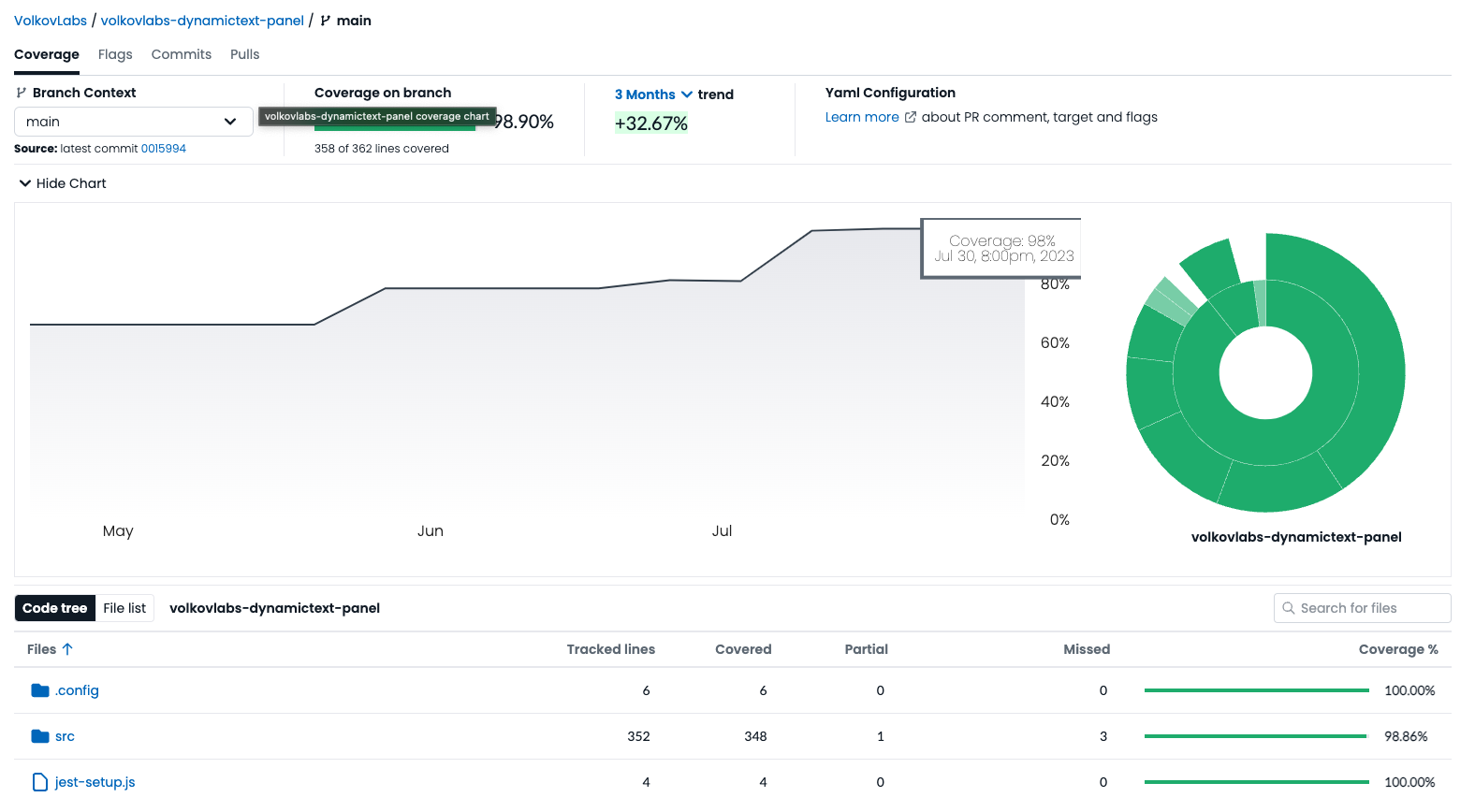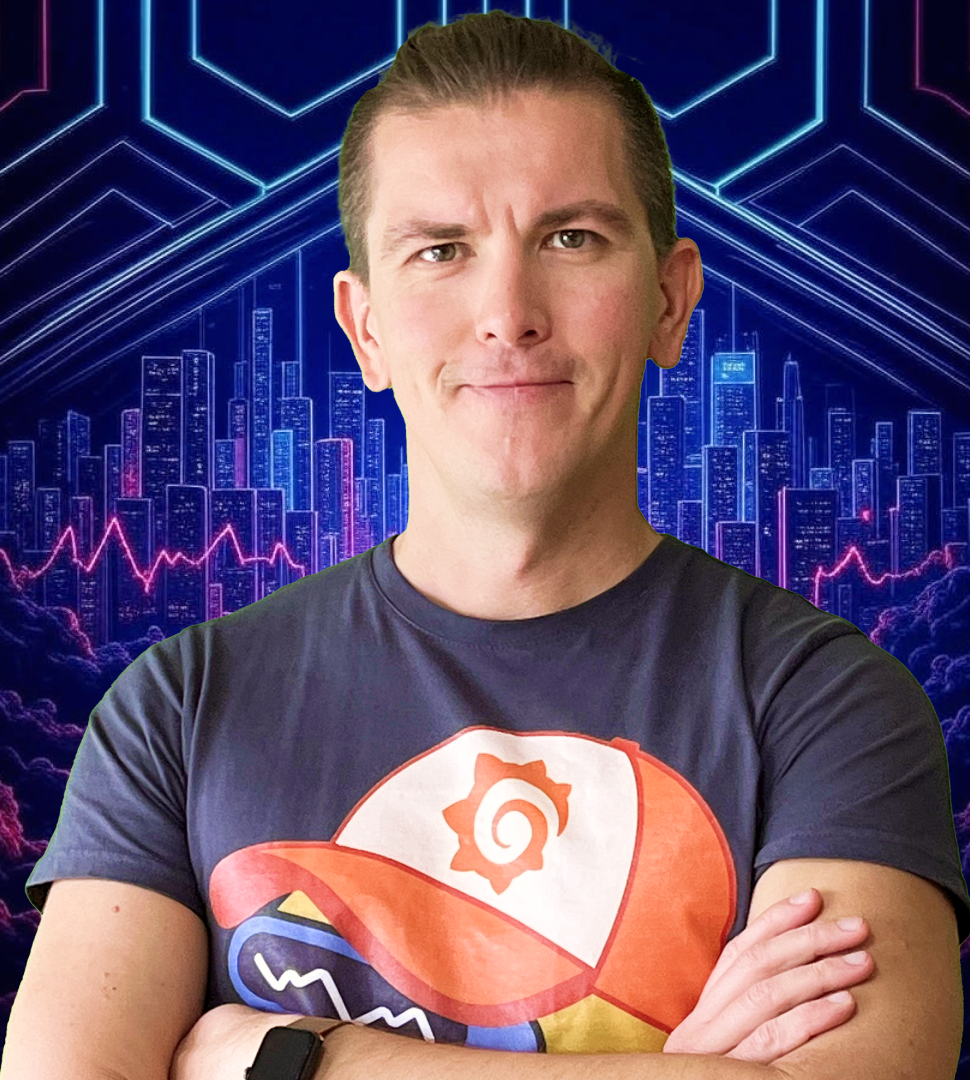External JS and CSS resources, status field, and increased test coverage in Business Text 4.1.0
We're excited to announce the release of the Business Text panel 4.1.0. This feature release includes the following updates:
- Added support for external JavaScript and CSS resources.
- Added the status field to display a background color.
- Increased test coverage up to 99%.
External JavaScript and CSS resources
The Business Text panel plugin enables the loading of additional JavaScript and CSS resources from external URLs like CDN (Content Delivery Network). To prevent the loading of third-party URLs, you can store CSS and JS files on your Grafana instance in the public folder.
You need to disable sanitization in your Grafana instance to see external resources in the panel options.

You can use external CSS and JS files to include additional visual elements and execute JavaScript functions from the JavaScript code editor.
Status field
The statusColor variable can be used to set a background or foreground color of any HTML element based on the threshold ranges for the selected status field.

Example
<div style="background-color: {{statusColor}}">{{A-series}}</div>
Sophisticated solution from the community
Business Text panel enables the creation of the most comprehensive solutions without building additional panels.
Register the aggr_val Handlebars helper to aggregate values returned from a data source.
handlebars.registerHelper(
"aggr_val",
(
data = my_data,
key_value,
aggr,
key_to_filter1,
val_to_filter1,
key_to_filter2,
val_to_filter2
) =>
((numbers) => {
const result =
numbers.length === 0
? 0
: aggr === "sum"
? numbers.reduce((total, num) => total + num, 0)
: aggr === "avg"
? numbers.reduce(
(total, num, _, { length }) => total + num / length,
0
)
: aggr === "min"
? numbers.reduce((min, num) => (num < min ? num : min), numbers[0])
: aggr === "max"
? numbers.reduce((max, num) => (num > max ? num : max), numbers[0])
: aggr === "first"
? numbers[0]
: aggr === "last"
? numbers[numbers.length - 1]
: (() => {
throw new Error(
"Invalid aggr. Supported aggr are: sum, avg, min, max, first, last"
);
})();
return Number.isInteger(result) ? result : result.toFixed(2);
})(
data
.filter(
(item) =>
item[key_to_filter1] === val_to_filter1 &&
item[key_to_filter2] === val_to_filter2
)
.map((item) => item[key_value])
)
);
handlebars.registerHelper(
"sel_val",
(
data = my_data,
key_value,
key_to_filter1,
val_to_filter1,
key_to_filter2,
val_to_filter2
) => {
return data
.filter(
(item) =>
item[key_to_filter1] === val_to_filter1 &&
item[key_to_filter2] === val_to_filter2
)
.map((item) => item[key_value]);
}
);
Display aggregated values based on any rules, which the native Grafana transformations do not support.
# ### sel_val data "value"
{{sel_val data "value"}}
- sum:
{{aggr_val data "value" "sum"}}, avg:
{{aggr_val data "value" "avg"}}, min:
{{aggr_val data "value" "min"}}, max:
{{aggr_val data "value" "max"}}, first:
{{aggr_val data "value" "first"}}, last:
{{aggr_val data "value" "last"}}, # ### sel_val data "value" "category" "A"
{{sel_val data "value" "category" "A"}}
- sum:
{{aggr_val data "value" "sum" "category" "A"}}, avg:
{{aggr_val data "value" "avg" "category" "A"}}, min:
{{aggr_val data "value" "min" "category" "A"}}, max:
{{aggr_val data "value" "max" "category" "A"}}, first:
{{aggr_val data "value" "first" "category" "A"}}, last:
{{aggr_val data "value" "last" "category" "A"}}, # ### sel_val data "value"
"category" "A" "type" "T1"
{{sel_val data "value" "category" "A" "type" "T1"}}
sum:
{{aggr_val data "value" "sum" "category" "A" "type" "T1"}}, avg:
{{aggr_val data "value" "avg" "category" "A" "type" "T1"}}, min:
{{aggr_val data "value" "min" "category" "A" "type" "T1"}}, max:
{{aggr_val data "value" "max" "category" "A" "type" "T1"}}, first:
{{aggr_val data "value" "first" "category" "A" "type" "T1"}}, last:
{{aggr_val data "value" "last" "category" "A" "type" "T1"}},
Code Coverage
With our plugins installed on thousands of Grafana instances, we recognize that our users do not experience any unexpected changes, thus we increased Business Text panel's test coverage up to 99% and refactored its legacy components.

Getting Started
You can install the Business Text panel from the Grafana Plugins catalog or using the Grafana command line tool.
For the latter, please use the following command:
grafana cli plugins install marcusolsson-dynamictext-panel
Tutorial
The video reviews the major latest release including the data flow, predefined helpers and numerous examples of the external JavaScript libraries.
We have many other tutorials that you can find helpful. You can review all related to this plugin tutorials here.
Release Notes
Features / Enhancements
- Updated ESLint configuration (#192).
- Increased test coverage for the plugin's functionality (#194).
- Added the status field (#196).
- Added support for external JavaScript and CSS resources (#197).
- Added compatibility with Grafana 10.0.2 (#201).
Volkov Labs Is Now Closed
Following our acquisition, Volkov Labs has officially ceased operations as of September 26, 2025. We are no longer accepting feedback, support requests, or partnership inquiries. The Business Suite for Grafana repositories have been archived on our GitHub organization, and no further development or support will be provided.
We are deeply grateful for the incredible support from our community and partners over the past four years.



